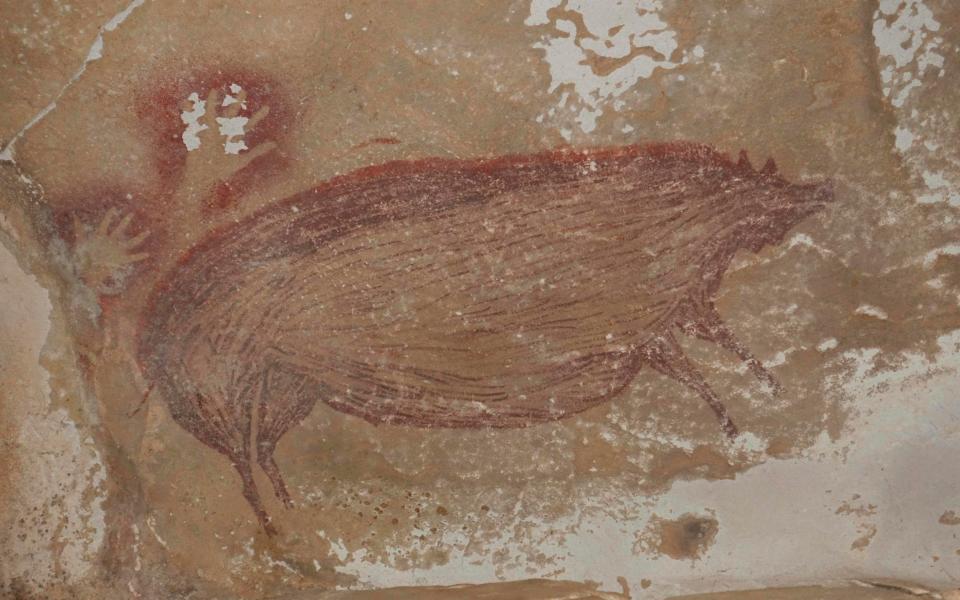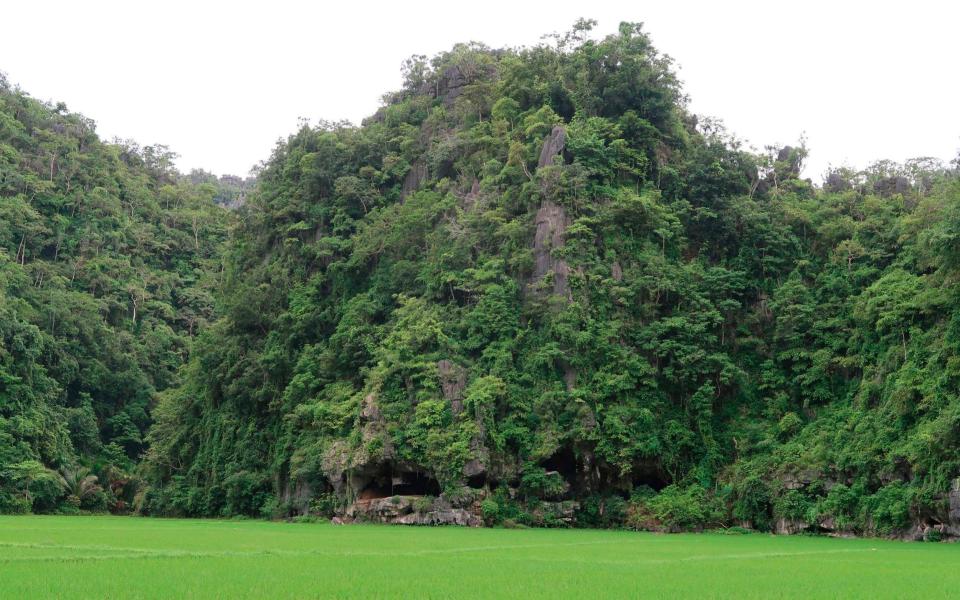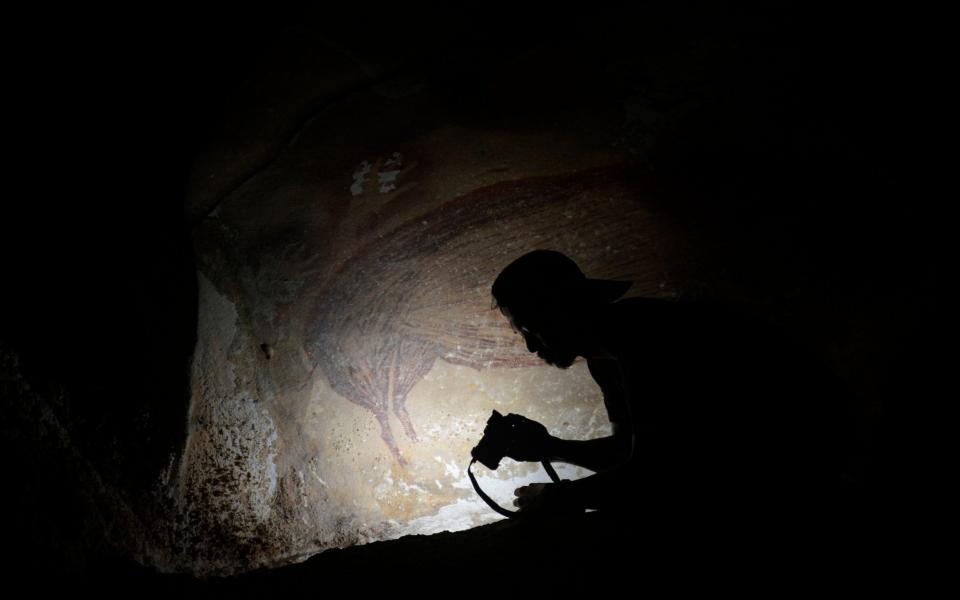World's oldest known animal cave painting found in Indonesia

In a stunning, secret valley enclosed by limestone mountains on an Indonesian island, archaeologists have discovered what they believe to be the world’s oldest known animal cave painting – a life-sized portrayal of an indigenous warty pig, which was made at least 45,500 years ago.
The figurative artwork, painted using red ocher pigment, shows a social interaction between a group of pigs and was first found in December 2017 during a survey led by Basran Burhan, a graduate student at Australia’s Griffith University, after local farmers led him deep inside the Leang Tedongnge cave.
The painting's age, outline for the first time in the journal Science Advances on Wednesday, provides the earliest evidence of human settlement on the island of Sulawesi, a region already considered by some experts to be rich in some of the oldest representational cave art in the world.
Professor Adam Brumm, also an archaeologist at Griffith University and a co-author of the study, told the Telegraph he had been amazed by the “beautiful, vivid portrayal” of the pigs after making the difficult trek to the remote cave.
“The painting depicts a scene and this is very rare in early cave art,” he said. “There is some sort of narrative going on..The artists portrayed [the pigs] as enormously fat and jolly looking. You sit there lost in wonder, pondering the meaning of it and trying to just decipher what the true story was behind it.”

The site is only about 40 miles from Makassar, a city of some 1.5 million, but the painting was previously undiscovered because of the forbidding local terrain which is only accessible in the dry season. The isolated Bugis community who live in the valley said Westerners had not ventured there before.
“You have to trek up and up into the limestone mountains along a rough jungle path,” said Mr Brumm, describing how at the top of the mountain his team had to walk through another tunnel-like cave before it emerged into a “spectacular” hidden valley.
He said the painting, which measures 53 by 21 inches, and shows a pig with a short crest of upright hair and horn-like facial warts facing two other partially preserved pigs, provided an insight into the ancient community’s connection with the animal world.
Humans have hunted Sulawesi warty pigs for tens of thousands of years, and they are a key feature of the region's prehistoric artwork, particularly during the Ice Age.
“It really speaks of this ancient and very longstanding spiritual connection with this one particular species of pig,” he said. “It seems to have been the case that the ice-age artists in Sulawesi were bound to the fate and future of this species.”

The age of the artwork was calculated by Maxime Aubert, a dating specialist, who identified a calcite deposit that had formed on top of the painting, then used Uranium-series isotope dating to deduce the deposit was at least 45,500 years old, although it may be older.
The cave paintings also help to inform understanding of early human migrations. The earliest settlers to reach Australia 65,000 years ago would probably have had to cross the islands of Indonesia, known as "Wallacea."
“We hope to find earlier evidence of rock art dating back to around 65,000 years ago,” said Mr Brumm. “There are all sorts of exciting prospects to look for this early art that could have been left by the earliest ancestors of aboriginal people in Australia.”
However, Paul Pettitt, a British archaeologist specialising in the Palaeolithic era, said that while the art was “impressive” that a few issues “give me reservations about the reliability of what they publish.”
His concern lies mainly in the definitive use of “minimum ages” to claim the discovery of the world’s oldest figurative art. The study needed “a little more integrated rigour before we start rewriting prehistory,” he said.

 money
money 